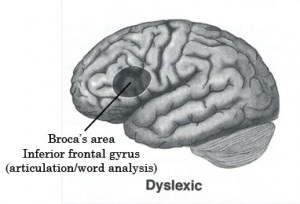 Homeschooling children with dyslexia is generally more challenging than homeschooling a child without any particular learning disabilities. But, in many cases it would be better to home school a child with dyslexia, at least for some amount of time, than to have them in a public school. One of the main reasons that it can be better to homeschool your child with dyslexia is because of the extra attention you can give to them. Your dyslexic child is likely to struggle in almost every subject of learning, because reading is an integral part of learning almost any topic. Even in math, words start to appear in math books, and are used to communicate mathematical ideas.
Homeschooling children with dyslexia is generally more challenging than homeschooling a child without any particular learning disabilities. But, in many cases it would be better to home school a child with dyslexia, at least for some amount of time, than to have them in a public school. One of the main reasons that it can be better to homeschool your child with dyslexia is because of the extra attention you can give to them. Your dyslexic child is likely to struggle in almost every subject of learning, because reading is an integral part of learning almost any topic. Even in math, words start to appear in math books, and are used to communicate mathematical ideas.
Diagnose Dyslexia Before Homeschooling your Child
You may decide to homeschool your child, but before you do, you should have good reasons for doing so. If you suspect that your child has a learning disability, you should be sure you know which one it is before you start homeschooling. Whatever strategy and methodology you use to homeschool your child will be different depending upon which learning disability your child has. So if you suspect your child has dyslexia, and you are considering homeschooling them, make sure that they actually have dyslexia (and not some other learning disability) before you start looking into homeschooling. Just because your child seems to struggle with learning doesn’t mean they have a learning disability, and even if your child does have a learning disability, there’s no guarantee its dyslexia. Other child learning disabilities could be ADHD or Autism
Homeschooling Your Dyslexic Child
So, you have had your child diagnosed, and they are dyslexic, then you just need to decide whether or not you think it would be best to homeschool your dyslexic child. What goes into homeschooling your dyslexic child? Here is some insight on how to homeschool a child with dyslexia. The problem with dyslexia is that it makes it more challenging for a child to decode words and remember them. They will often re-decode the same words over and over again without making the connection that two instances of the same word are the same. The approach to teaching children with dyslexia is to use multi-sensory teaching methods, like having them write a letter and make a sound that the letter makes. Other elements of homeschooling children with dyslexia include starting with one sound, and teaching them all of the letter combinations that make that sound. For instance, you may start with ‘ow’ like in ‘cow’. So, they would be taught that this ‘ow’ sound can be spelled out with ‘ow’, ‘ou’, ‘au’, and ‘ao’. This would be done one sound at a time until all sounds (and their associated letter combinations) have been covered.
Speed Reading and Dyslexic Children
An interesting advantage that children with dyslexia have is that they tend to be more apt to learn speed reading than other children. Once they have achieved a third grade level of reading capability, you should investigate their ability to do this. In a sense, speed reading is a more advanced method of reading, and since your dyslexic child is more capable of doing this than the average non-dyslexic child, they essentially have a higher wall to climb (the initial learning challenges with reading), but once they climb it, they are capable of climbing higher (speed reading) than other children!
Dyslexia Curriculum for Home Schooled Children
There are several options for developing a home school dyslexia curriculum. Stevenson learning skills is a cost effective program that can be taught by someone with no prior experience, and can be modified to be used by older students. The Orton-Gillingham method is actually the basis of some of what was discussed above regarding multi-sensory teaching methods. They use specific, direct, sequential multisensory instruction.
